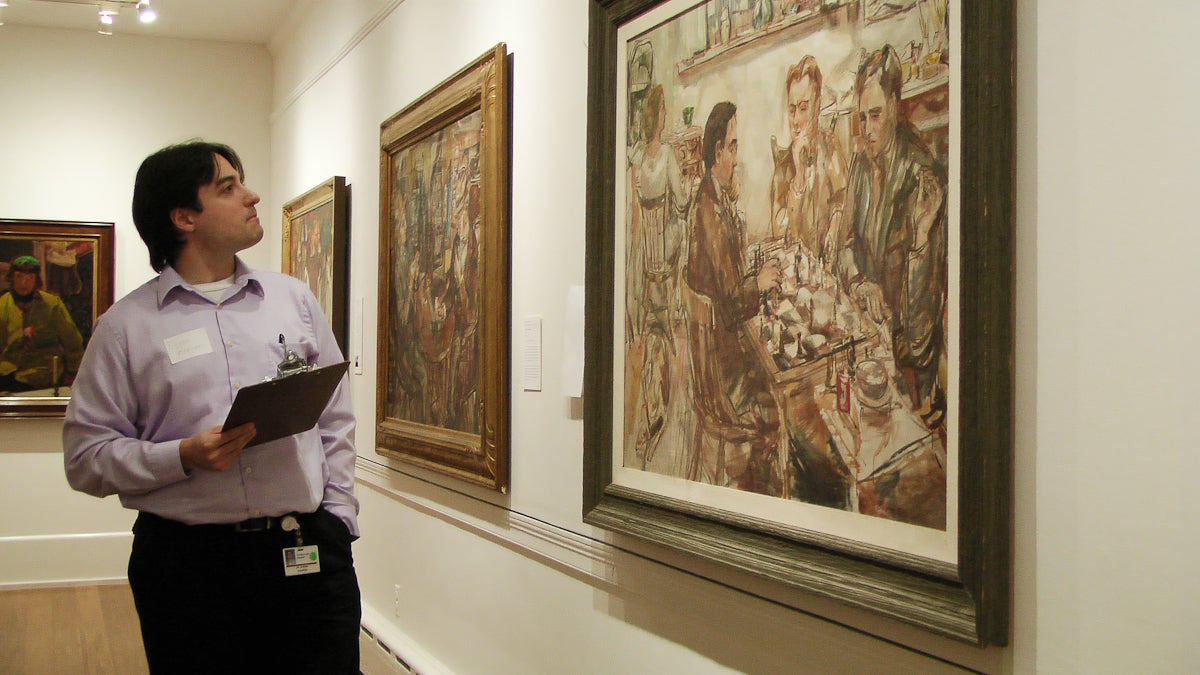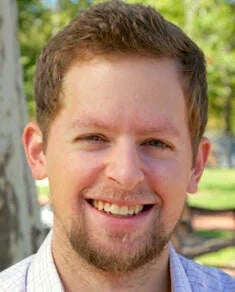Can the intersection of art and medicine lead to better patient care?
Listen
Drew Rowan
On a recent Friday afternoon, a half-dozen residents from Chestnut Hill Hospital’s Family Practice Program are doing something they rarely do.
On a recent Friday afternoon, a half-dozen residents from Chestnut Hill Hospital’s Family Practice Program are doing something they rarely do: sitting still.
Instead of bouncing from patient to patient, they’re at the Woodmere Art Museum in Chestnut Hill for a class called “The Art of Observation,” the first step of which is to jot down every detail of a painting in complete silence.
“Don’t talk to anyone,” Dr. Flo Gelo tells the young doctors. “Just sit here and take an inventory. Anything your eyes land on are grist for the mill.”
As the name implies, part of the two-hour course is designed to sharpen medicine’s most basic building block. Observation is the first ingredient most doctors use to reach a diagnosis and choose a treatment for their parents.
“What has to happen is a cultivated skill for the doctor to be able to look at a face and be able to discern, to look at a body part and to see what’s really there and not what you might remember from the last patient you saw leaving the room ten minutes ago,” says Gelo.
Separating observation from interpretation
After about 10 minutes, the doctors come together for two sharing sessions.
One group had studied a 1915 Theresa Bernstein painting called “The Readers,” an illustration-style snapshot of The New York Public Library.
The other group had looked over “The Chess Players,” another Bernstein painting done about a decade later that depicts a friendly match between two men in a parlor.
The process is, at times, a bit tedious as the residents struggle to separate observation from interpretation, the next part of the process.
Standing in front of “The Chess Players,” one resident says that a dog in the painting is lying on what “appears to be hardwood floor.”
Gelo interjects.
“That it would be hardwood floor or linoleum would be an interpretation,” she points out.
Before leaving, the doctors combine observation and interpretation to form a narrative about the painting. A brief art history lesson follows.
Paying attention to the little things
Standing in the hum of a first-floor gallery, third-year resident Eva Hossa says the class could lead to better results for her patients.
“The small things you notice end up suggesting larger stories that you then have to pursue, or larger things that are going on, rather than what’s obvious,” says Hossa.
Dr. Valerie Pendley, a veteran family doctor at Chestnut Hill, says it’s those little things, like facial expressions, pallor, even body build, that can help steer the diagnosis in the right direction, even before the conversation starts.
In family medicine, those changes can be seen during a single visit, but also over time as patients sometimes stick with one physician for years and years.
“Often as the elderly progress, you notice that in the past they would always come and be beautifully dressed and put together and then as time goes by that patient may change. So that would be a clue that things are starting to fall apart a little bit with their memory or intellectual capabilities,” says Pendley.
Reflecting on personal approaches to medicine
Gelo says “The Art of Observation” isn’t magic. It won’t instantly make doctors better at the basics.
For now, part of the hope is that doctors who take the class think a bit about their approach to medicine, what can be gleaned just by looking.
Second-year resident Atena Yunus says she started understanding the class’ power soon after it was over. A longtime smoker had been admitted with labored breathing. Later, it was an observation that helped her know that the woman was ready to go home.
“I was kind of on the fence because I was on call, so I hadn’t seen her progress throughout the week,” says Yunus. “When I was on the fifth floor, I saw her working with one of our PT people and she was able to walk and she didn’t look super short of breath.”
That additional observation time took Yunus off the fence and the woman was discharged.
This is the first year Chestnut Hill Hospital is offering the class. They’ve only done two sessions. And so, it could be some time before they truly know if the intersection of art and medicine is making a difference.
Or if the class simply offers young doctors a chance to stop and think about something other than their next patient.
WHYY is your source for fact-based, in-depth journalism and information. As a nonprofit organization, we rely on financial support from readers like you. Please give today.




